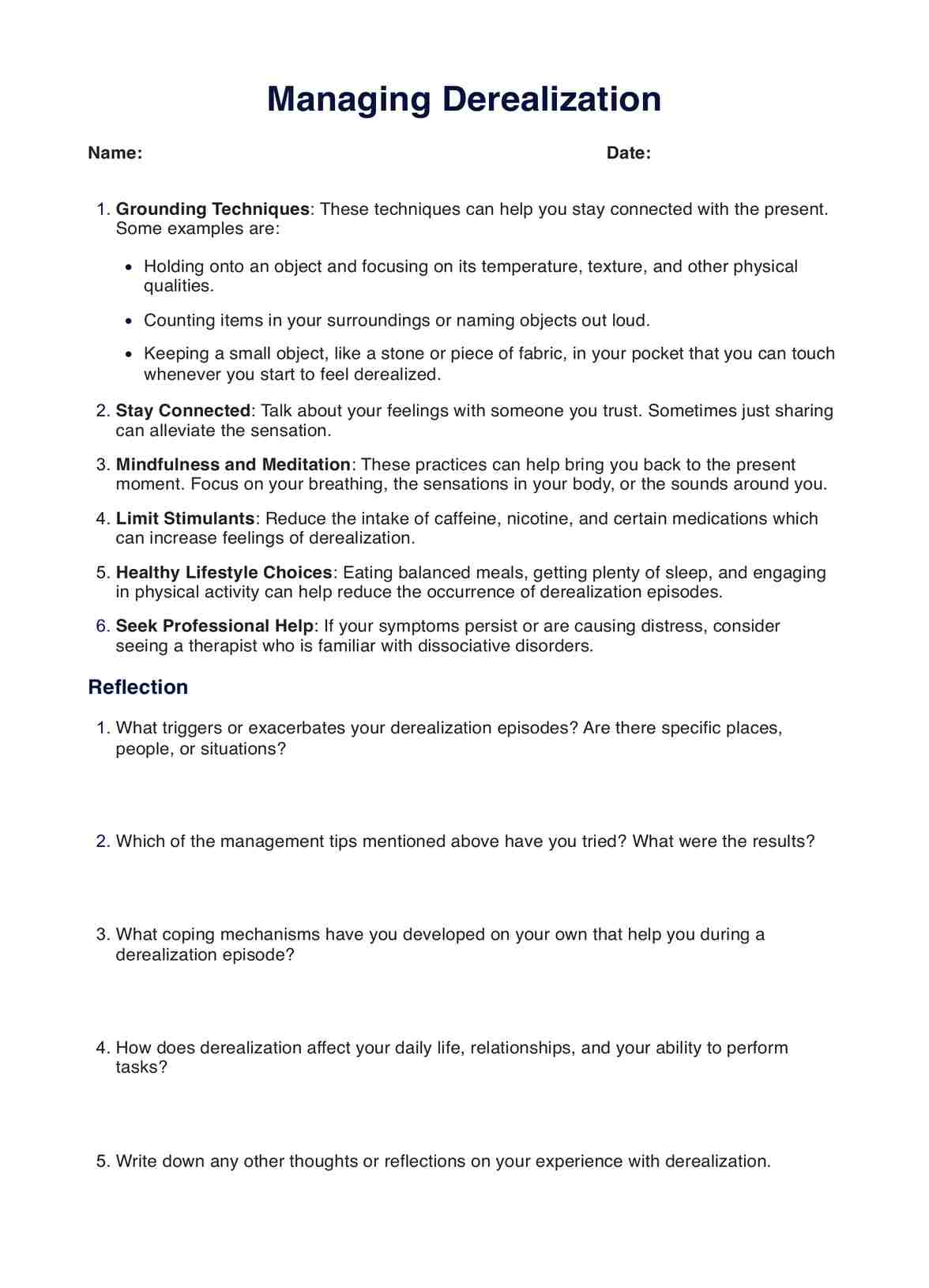It varies from person to person, but it could take 15 to 30 minutes on average.

Describe Your Derealization Experiences PTSD Worksheet
Explore the benefits of the Describe Your Derealization Experiences PTSD Worksheet. Enhance self-awareness, identify triggers & improve therapy sessions effectively.
Use Template
Describe Your Derealization Experiences PTSD Worksheet Template
Commonly asked questions
The worksheet can provide a structured way to understand and express your experiences with derealization.
This worksheet is best used when you can reflect on your experiences without being overwhelmed.
EHR and practice management software
Get started for free
*No credit card required
Free
$0/usd
Unlimited clients
Telehealth
1GB of storage
Client portal text
Automated billing and online payments











